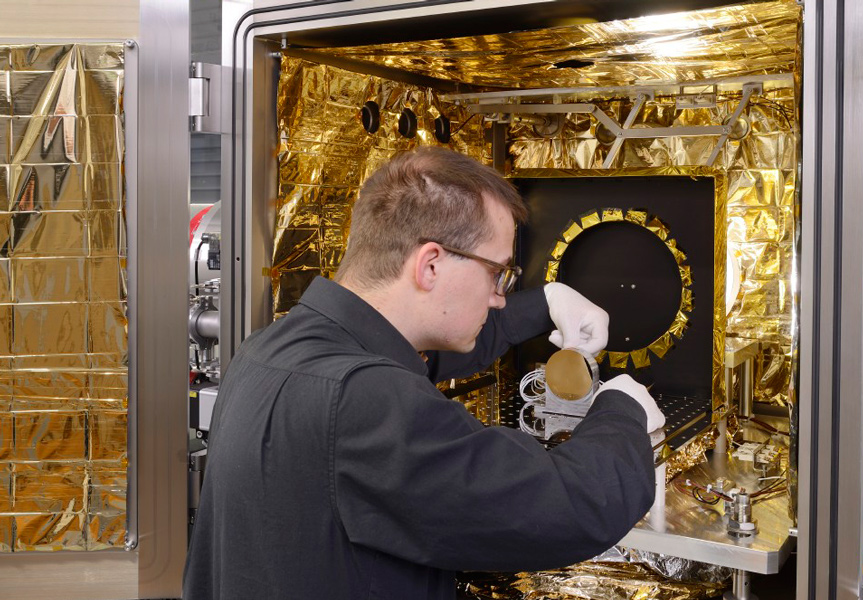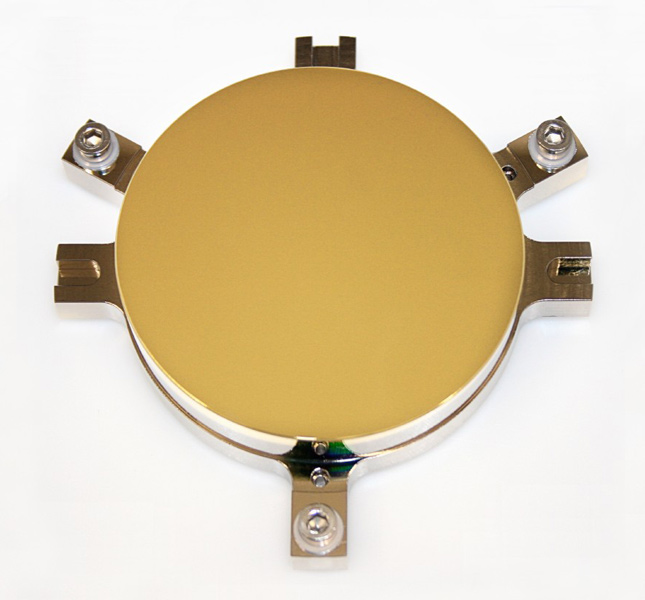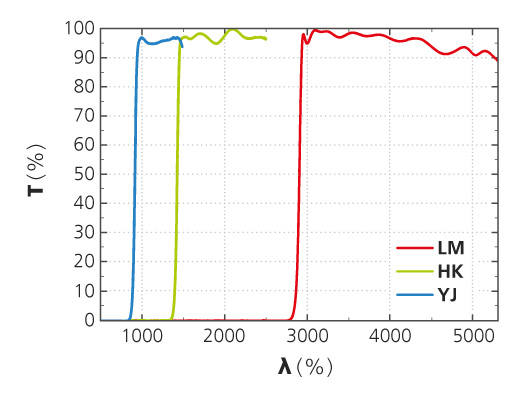Mirrors and Filters for the Search for New Planets
CRIRES+ (CRyogenic InfaRed Echelle Spectrograph upgrade) will be commissioned at the Very Large Telescope (VLT) in 2018. This scientific instrumentation will allow the confirmation of transit exoplanet candidates orbiting cool stars. The atmospheric characterization of transiting planets and the study of the origin and evolution of stellar magnetic fields are further research areas. After the upgrade, this instrument is a cross-dispersed spectrograph increasing the observing efficiency by a factor of 10.
Upgrading this instrument, the mirrors for the cross-dispersion unit (CDU) were manufactured by diamond turning and several polishing steps. The operational temperature of the CDU is 65 K. The material used has to be artificially aged to improve the dimensional stability of the mirrors at cryogenic temperature. The flat and spherical mirrors are made of melt-spun aluminum alloy RSA6061, the aspherical collimator mirror is made of electroless nickel plated RSA6061. After diamond turning, the turning marks were removed by magnetorheological finishing, improving the shape deviation as well. A further smoothing step was necessary to reduce the micro-roughness. A micro-roughness of 2 nm RMS to 5 nm RMS and shape deviation lower than λ / 2 peak-to-valley (λ – 633 nm) were successfully achieved. The mirrors for the CDU were coated by sputtering a high-reflective gold layer. In a spectral range between 1 μm and 5 μm, the reflectivity of gold is higher than 98 %.
Furthermore, three optical filters for the Y+J-, H+K-, and L+M-bands (regions where the earth’s atmosphere is not absorbing) have been produced, covering a wavelength range from 960 nm to 5,300 nm. For this purpose, glass substrates have been coated on both sides by magnetron sputtering with three different interference layer systems. The blocking of transmission had to be realized from a wavelength of 500 nm upward to the edge of the particular filter. The filters, and hence the optical coating, will be cooled to approximately 65 K in operating conditions and have to resist this temperature and the thermal cycling multiple times without fatigue or a change of the optical properties. The shape deviation of the filters is below 50 nm RMS. The optical density (OD) in the blocking range of the YJ- and HK-filters is above 4.5. The LM-filter still has an OD higher than 3.5. The transmissions of over 95 % nearly reached in the whole spectral range, as well as the small deviation of the filters edge, are a sign of the high precision of the coating process, which has been accomplished without the possibility of optical monitoring.
Authors: Jan Kinast, Ralph Schlegel, Jean Louis Lizon (European Southern Observatory ESO), Roman Follert (Thuringian Observatory in Tautenburg)



